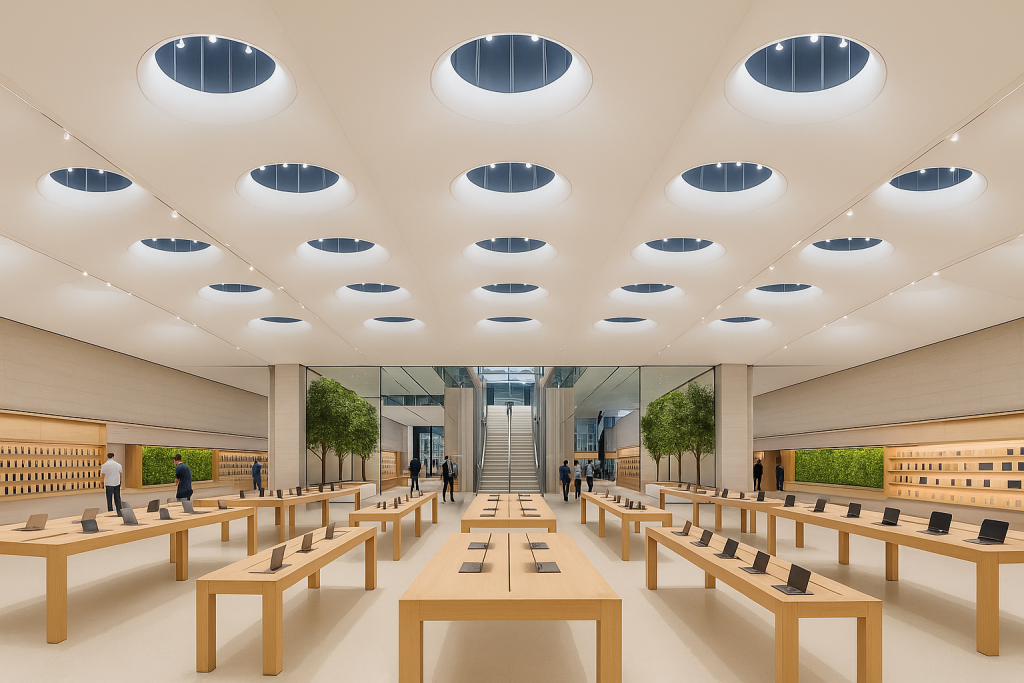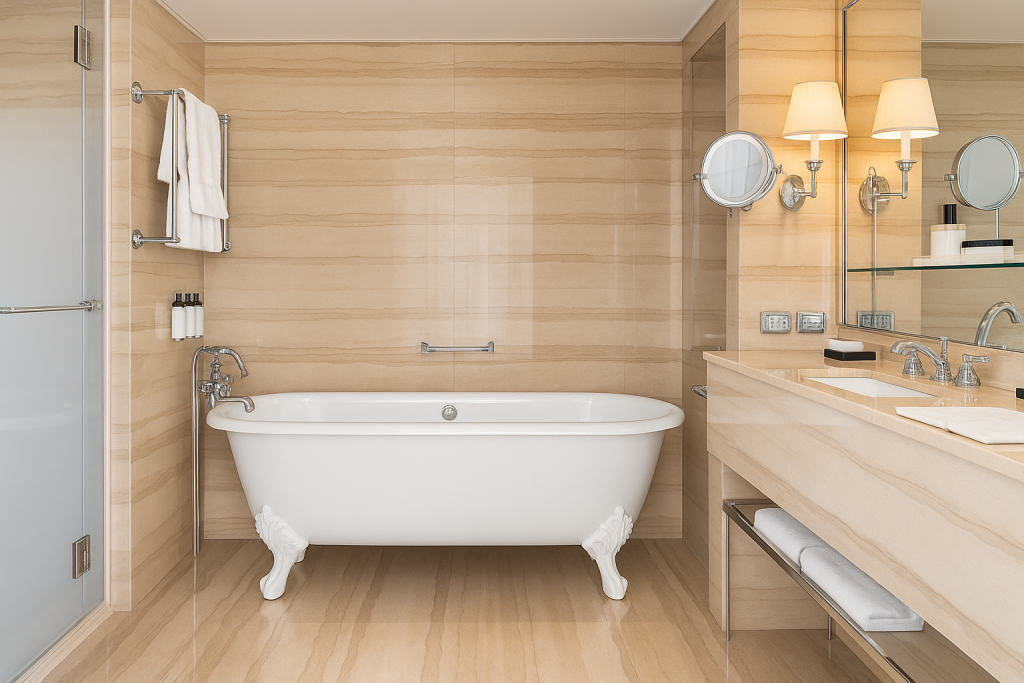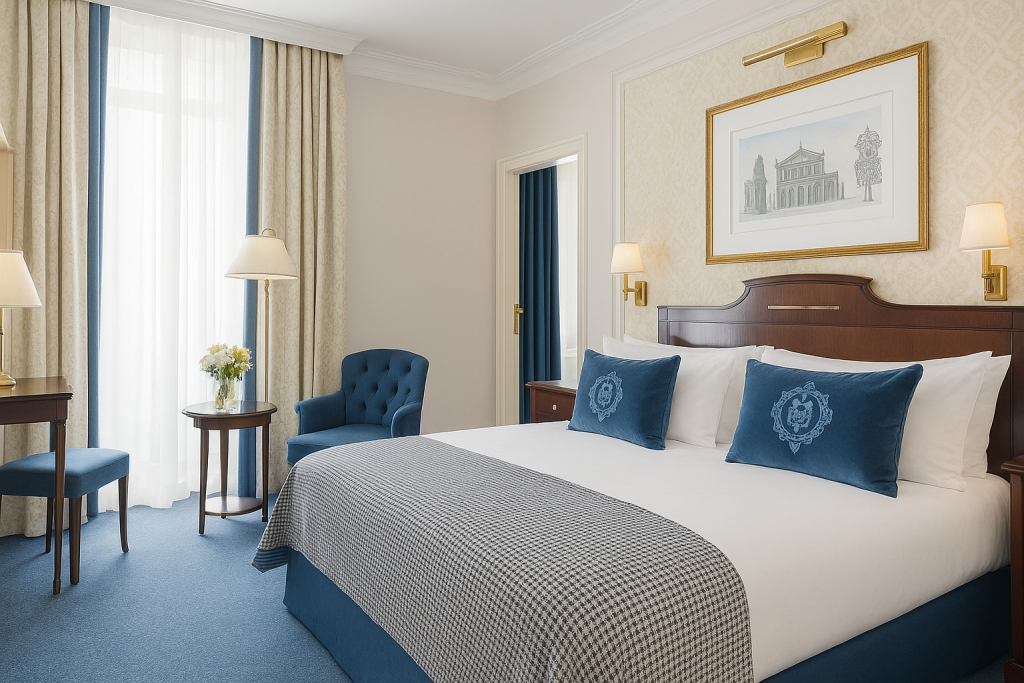When a Lobby Understands Dopamine Better Than Your Ex
Not all hotels are made equal — and not all “luxury” actually feels like luxury.
But this one? It gets a lot of things right. From the moment you walk into the lobby, your brain is gently nudged to relax, trust, and feel… special.
Let’s break down what this hotel does exceptionally well — and why your guests deserve the same.

Lobby: Where Nature Meets Nobility
What hits first is the greenery — tall, lush plants spaced about 2.5–3 meters apart. This isn’t just aesthetics. It’s Biophilic Psychology in action.
According to Attention Restoration Theory, natural elements stimulate the prefrontal cortex, reducing mental fatigue and increasing calm focus.
Real-world example:
At 1 Hotel Central Park (New York), the heavy use of indoor greenery increased guest dwell time in common areas by 18%, boosting on-site café sales by 22% in six months.
Then comes the chandelier. High enough to impress, low enough to connect. That’s the Halo Effect — a cognitive shortcut where one luxurious element elevates the perceived value of everything around it.
Real-world example:
Louis Vuitton uses this in flagship stores — one powerful sculpture or chandelier sets the luxury tone, even if the rest is minimalist.
And that skylight? Pure design genius. The natural light aligns with Cognitive Fluency — when environments feel “easy” to understand, guests feel more comfortable and positive.
Real-world example:
Apple Stores redesigned in 2006 to maximize overhead daylight led to longer visits and higher conversion, according to Jonathan Ive, Apple’s former chief design officer.
10/10 for emotional impact.

Bathroom: Designed to Whisper “You’re Worth It.”
That standalone tub? Iconic.
The seamless beige marble? Calming.
But the real secret lies in Mere Exposure Effect — our brains associate repeated exposure to an object with higher value and comfort. Freestanding tubs are everywhere in luxury advertising.
Real-world example:
Rosewood Beijing redesigned all VIP bathrooms with standalone tubs in 2017, leading to a 14% rise in TripAdvisor reviews mentioning “relaxation” and “luxury” within 6 months. Small touches like artwork or a decorative plant would elevate it even further, activating the dopaminergic reward system, which enhances emotional memory

Rooms: When Color Psychology Works for You
Royal blue? A behavioral jackpot.
This color calms the limbic system, enhancing trust and reducing anxiety. When paired with symmetry and warm natural light, it creates a secure emotional anchor.
Real-world example:
The Ritz-Carlton Berlin uses navy tones and symmetrical layouts to increase emotional satisfaction scores — a pattern confirmed in post-stay surveys. Layered curtains support Circadian Rhythm Synchronization, which improves sleep quality and even immune function (according to studies by the Sleep Research Society).

Pricing: Subtle Psychology, Smartly Applied


Scarcity? Used wisely with labels like “Only 4 rooms left.” This activates the amygdala, sparking urgency.
Real-world example:
Booking.com A/B tested scarcity labels and found a 9% increase in conversion when guests saw stock limits.
Then comes Decoy Pricing — three price tiers where the middle one becomes the “smart” choice.
Real-world example:
In a 2008 study, The Economist offered three subscription models. The second option was a decoy — and tripled sales of the third, more expensive bundle. (Dan Ariely, Predictably Irrational)
Last: Positive Framing. Words like “Wonderful breakfast” and “Free cancellation” reduce mental resistance and increase trust.
Real-world example:
Expedia reported higher click-through rates for rooms described with emotionally framed phrases versus neutral ones.
Final Thoughts:
This is how luxury feels when it’s designed for the human mind — not just the eye.
It’s thoughtful. Intentional. Unforgettable.
I help hotels use behavioral economics and neuroscience to turn beauty into bookings — and trust into loyalty.
If you want a hotel that doesn’t just impress… but converts — let’s talk.
again — all thoughts are mine, based on science and too many cups of coffee. No guarantees, no promises. Just vibes.

Comments are closed